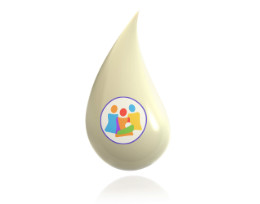Breastfeeding & Lactation After a Cesarean Birth
There is no reason a Cesarean birth should keep you from breastfeeding or providing your milk to your baby.
If you are having health problems, directly feeding or pumping can be delayed briefly until you are ready and able. If your baby is having health problems, providing your milk for your baby is one of the best things you can do for their health.
If you have spinal or epidural anesthesia during surgery, you should be able to view your baby shortly after your baby is born. Feel free to ask for skin-to-skin contact with your baby as soon as possible. Immediate skin-to-skin contact may be possible right after a cesarean birth with appropriate safety measures as long as you and your infant are medically stable. Many parents are ready to hold their baby and start breastfeeding while still in the recovery room.
Do not worry if you need assistance in holding your baby after birth. Your baby will love being close to you. Research has shown that skin-to-skin contact keeps a baby just as warm as being in an isolette or a warming bed. It also helps to keep a baby’s blood sugar remain stable and helps to calm both the birthing parent and the baby.
Once in your postpartum room, you may want to have someone help you position your baby at your breast in the clutch (football) hold under one of your arms. This will keep baby’s weight off your incision. Don’t worry if you need assistance positioning and holding your baby. You just had a baby, and you are recovering from major abdominal surgery.
Early feeding at the breast with contact at the nipple and skin-to-skin contact stimulates the release of oxytocin, which helps the uterus contract down to non-pregnant size and slows postpartum bleeding. Oxytocin is also the hormone that causes milk to let-down. Your baby’s suckling also releases prolactin, which supports milk production. These hormones work together to create calm and relaxing feelings for you and your baby and helps establish milk production.
During the first 24 hours you will probably have an intravenous line (IV) for pain control. This means that one of your hands will have tubing attached to it. Take your time getting baby situated so that the tubing is not in the way.
When your baby shows early hunger cues, such as mild squirminess, rooting or hands to the mouth, have someone (e.g. a nurse, your partner, or a family member) help you position your baby to directly feed. If your baby has not shown hunger cues in 2-3 hours, then have someone help wake the baby and latch for their next feed. Newborns need to feed a minimum of every 2-3 hours, although feeding more frequently is very common and normal. (See our handouts on Latching Well and Positioning)
Do not be afraid to take pain medication. Comfort is important to breastfeed the infant often. Being comfortable will also help to promote milk let-down. You can taper your medications as your pain level decreases.
As you recover from surgery, take care of yourself. Rest frequently, eat a balanced diet, and drink fluids to aid in healing. Seek assistance from anyone in your support system to do laundry, cook meals, run errands, and help with other children. Your only jobs should be healing and feeding your new baby.


